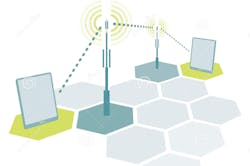UHF-Band Folded Antenna Is Suitable For In-Body Wireless Communications
With the development of in-body technology, wireless health monitoring will become a reality, reducing pressure on overburdened healthcare systems. In-body technology can potentially be applied to the healthcare field to transfer human body information such as temperature, blood-pressure, and cardiac rate. However, the human body is a problem for wireless signals due to the interaction between the human body and the implanted device’s antennas. Antenna gain and efficiency decrease as a result of a human body’s high dielectric loss. At Japan’s Chiba University, researchers have proposed implementing in-body wireless communications by means of one of the ultra-high frequency (UHF) bands.
The implanted antenna must have a small or thin size due to be embedded into the human body. The UHF band has been suggested for in-body wireless communications because its higher frequency enables a more compact antenna size. The researchers propose a folded antenna structure due to its reduced size. This antenna can be encased in a capsule and embedded into the human body with a biological syringe, eliminating the need for surgery.
Simulations were performed with the operating frequency set to 953 MHz. A link budget was used to calculate the required and available antenna power, which demonstrated that the proposed antenna provides enough available power to be a viable solution. The human arm was modeled with the antenna embedded into the arm.
A comparison of three human arm models was made. The desired operating frequency range from 951 to 956 MHz is covered with all three models. The proposed antenna was measured, demonstrating good agreement with the simulated results. Experiments confirmed the antenna gain exceeds the requirement of -35 dBi. See “Performance of Implantable Folded Dipole Antenna for In-Body Wireless Communication,” IEEE Transactions On Antennas And Propagation, March 2013, p. 1363.
About the Author

Nancy Friedrich
RF Product Marketing Manager for Aerospace Defense, Keysight Technologies
Nancy Friedrich is RF Product Marketing Manager for Aerospace Defense at Keysight Technologies. Nancy Friedrich started a career in engineering media about two decades ago with a stint editing copy and writing news for Electronic Design. A few years later, she began writing full time as technology editor at Wireless Systems Design. In 2005, Nancy was named editor-in-chief of Microwaves & RF, a position she held (along with other positions as group content head) until 2018. Nancy then moved to a position at UBM, where she was editor-in-chief of Design News and content director for tradeshows including DesignCon, ESC, and the Smart Manufacturing shows.
